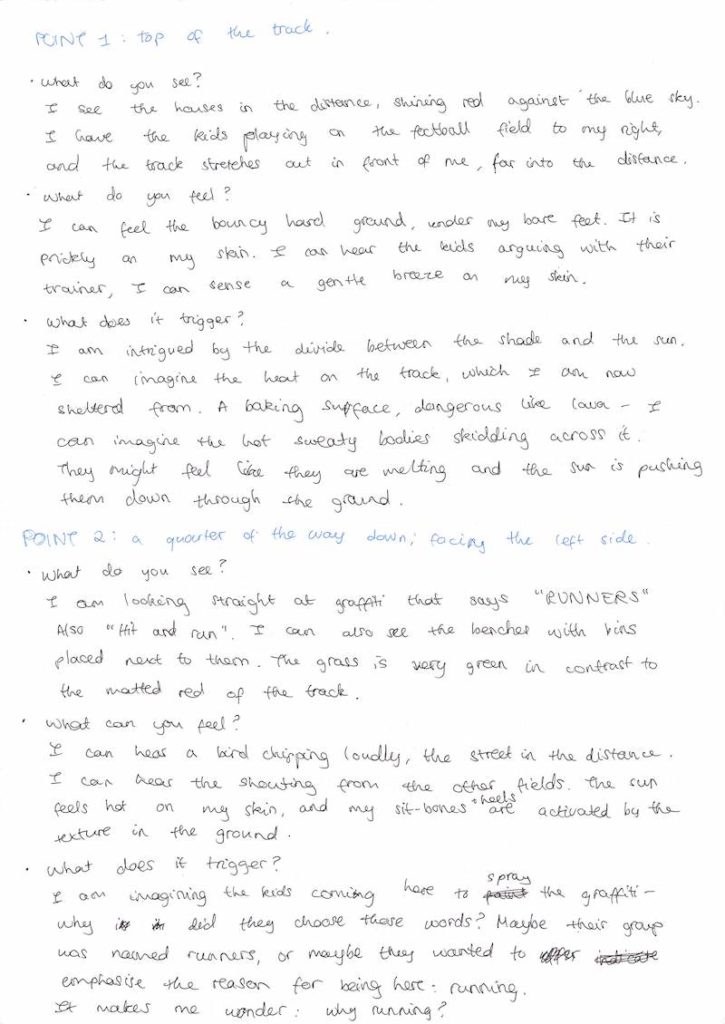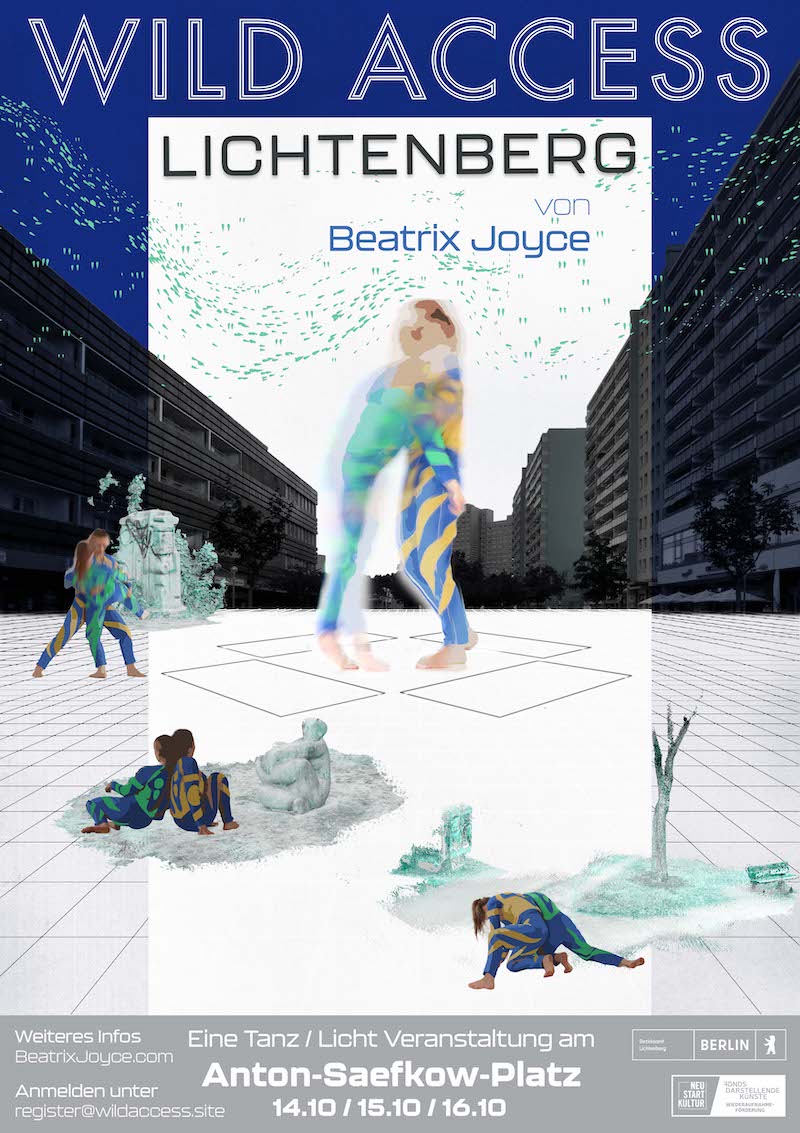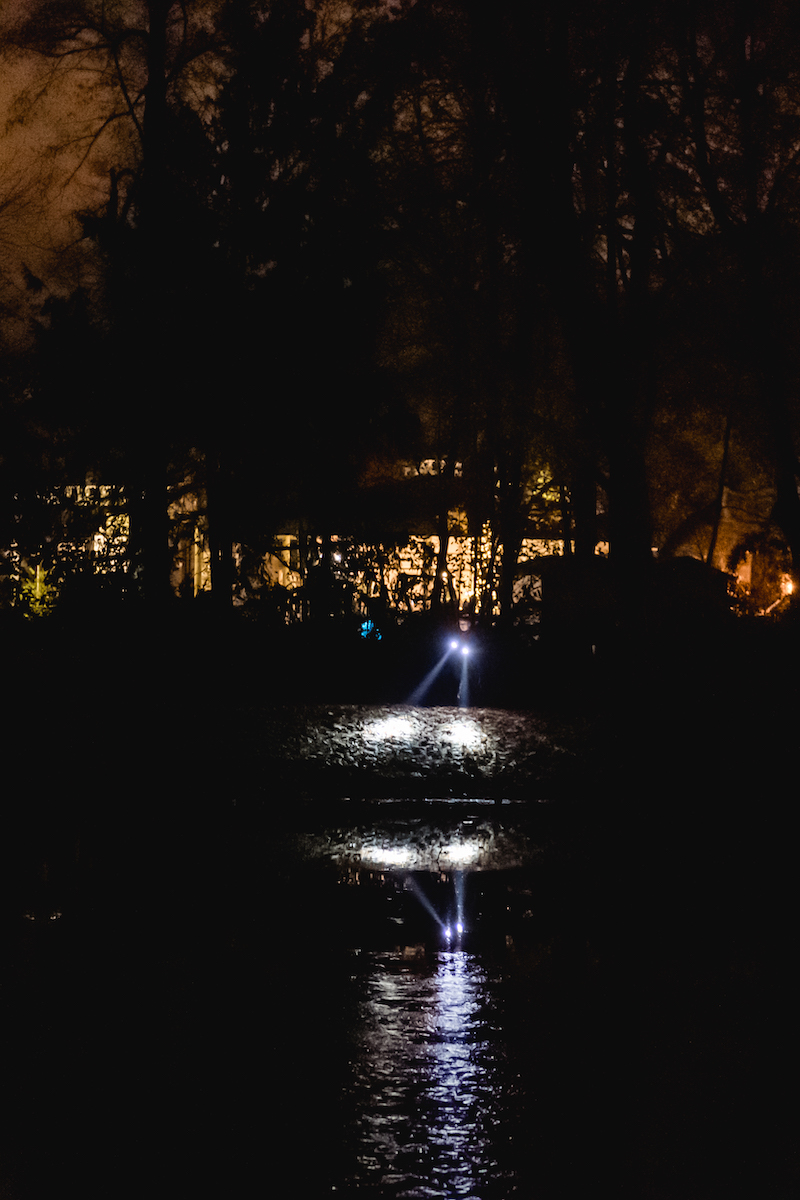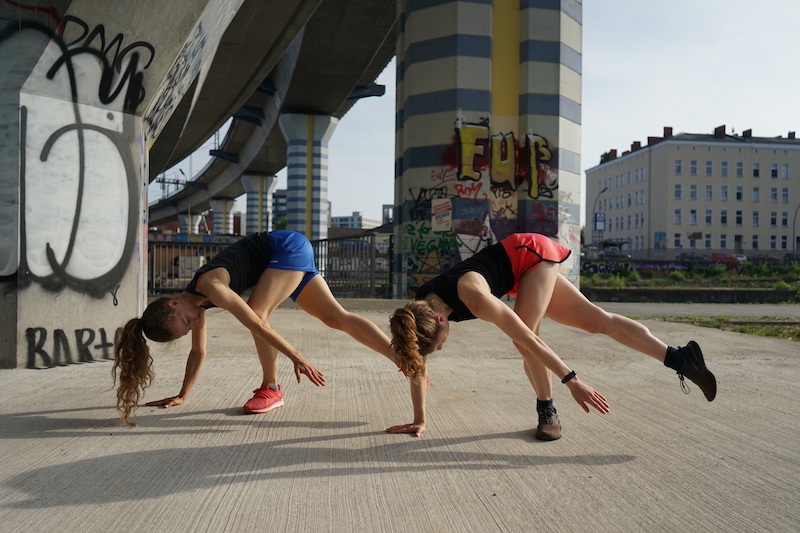For the second part of my research into performance in public space, I worked across three main locations in Berlin: Sportanlage Monumentenstraße in Schöneberg, Sportanlage Rennbahnstraße in Pankow and the streets of Schöneberg.
I was interested in discovering these places by taking an experiential approach, using the body in motion as an instrument of perception. I spent time in each location, made note of the people, activities, and events that were happening there, observed it from different perspectives and by using different senses, and formulated new questions that arose along the way.
During a residency in Tanzfabrik, Kreuzberg, I collected my notes and sketches from these different locations and re-worked them into diagrams, scores and exercises, a few of which I share here.

Sportanlage Monumentenstraße
Observation Exercise: Three questions
Sportanlage Monumentenstraße is an outdoor sports facility in Berlin Schöneberg. Aside from its multiple football fields, it also has an athletics running track that is used by its local football club, schools and residents of the area. Without excluding its usual function for sports, I was interested in exploring the running track as a public space, as a designed landscape, as a place where the body could move differently than expected. At four different locations across the track, I asked myself the following three questions:
- What do you see?
- What do you feel?
- What does it trigger?
By answering these questions each time anew, I sought to discover the subtle differences in perception when experiencing the track from different perspectives. How does a certain position of the body, within its given environment, trigger specific responses, associations or memories?
Sportanlage Rennbahnstraße
Finding the right questions
This public sports centre in Pankow covers a large terrain: there are football fields, a full 800m running track as well as designated spaces for alternative sports such as skating, archery and Discgolf. There is also a traffic safety training centre and a primary school on site. This variety of facilities makes for an intriguing location, and hails the question: “where are we?”.
As a way to discover and deepen my understanding of this site, I sought questions that could express the experience of being lost in a place, yet feeling connected to it at the same time. These questions were developed around the following interests:
- How does the body connect to its environment?
- How does the understanding of self and other, the knowledge of “the rest”, influence our perception of a place?
- Are we ever alone, in a place that is visited by many?
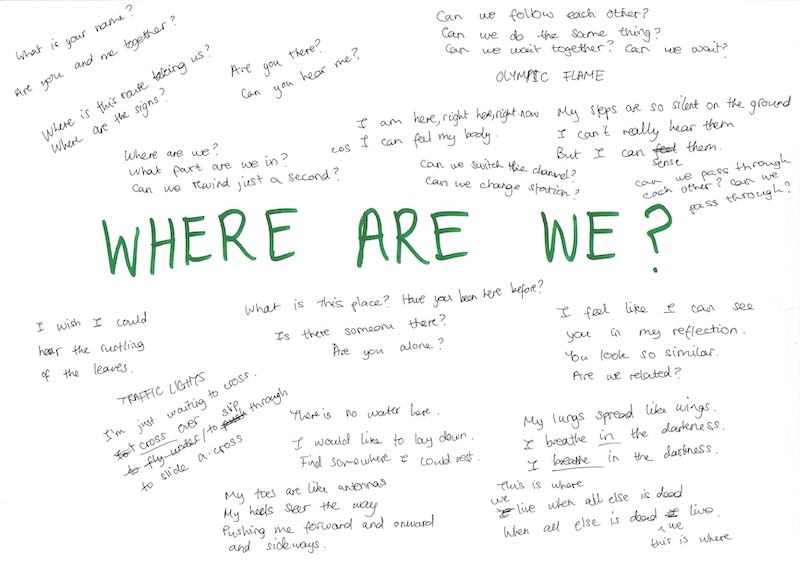

Streets of Schöneberg
Registering Environmental Sounds
In this exercise, I walked along the streets of Schöneberg, on a predetermined route from the project space Im Leeren Raum to Sportanlage Monumentenstraße, at sun set on a day in September.
Using a portable microphone, I recorded the sound of the environment and afterwards analysed the type of sound, the intensity, and the volume levels in these diagrams.
I was interested in discovering the space not from the perspective of the eyes, but from the perspective of the ears.
- How do we navigate our daily journeys through the city with the use of sound?
- How is our experience of a public space impacted through the sounds we hear?
- Can I design a performative experience based on the sounds that are already present in the environment?


Gefördert durch die Beauftragte der Bundesregierung für Kultur und Medien im Programm NEUSTART KULTUR, Hilfsprogramm DIS-TANZEN des Dachverband Tanz Deutschland.

